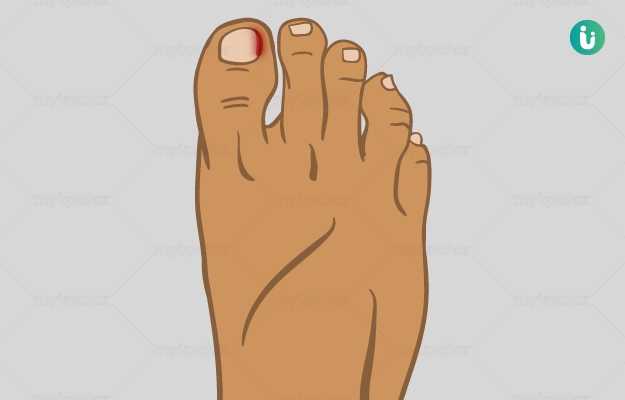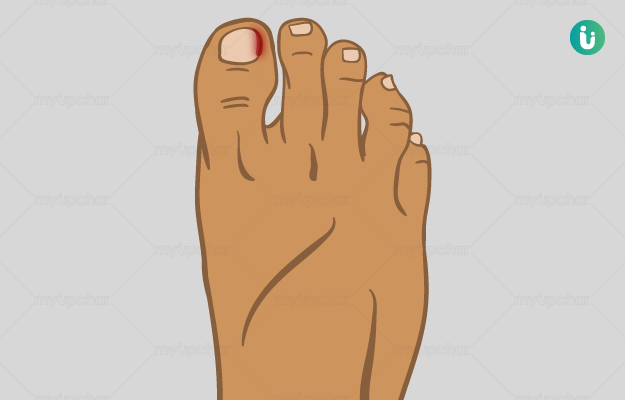An ingrown nail is a painful condition in which the edge of the nail starts to grow into the soft flesh. It is usually seen in the big toes but can also be seen in the nails of the hands.
Symptoms include inflammation, redness and severe pain in the affected toe or finger. An ingrown nail can sometimes be accompanied by pus discharge from the affected site.
Improper hygiene of nails or any trauma can cause ingrown nails. An ingrown toenail can also occur due to ill-fitted shoes. People who have diabetes or any other medical condition that affects their blood circulation are at a higher risk of suffering from complications associated with an ingrown nail.
People who have diabetes or any other medical condition that hampers their blood circulation are at a higher risk of suffering from complications associated with an ingrown nail.
An ingrown nail can be managed at home but needs medical attention if the condition becomes severe. The doctor can surgically remove the affected part of the nail, to prevent the spread of infection to the surrounding tissues and to the bone.

 Ingrown Nails articles
Ingrown Nails articles

 Home Remedies for Ingrown Nails
Home Remedies for Ingrown Nails





























 Dr. Laxmidutta Shukla
Dr. Laxmidutta Shukla











